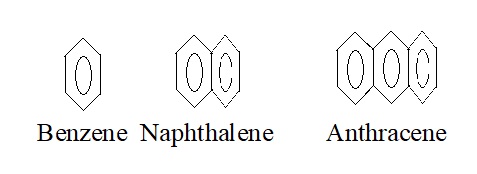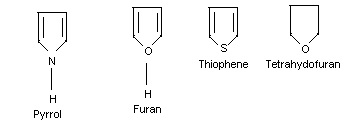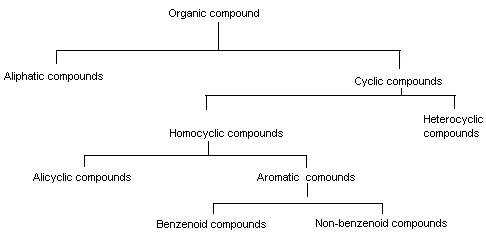Classification Of Organic Compounds:
The simplest organic compounds containing only carbon and hydrogen are called hydrocarbons. These are regarded as the parent organic compounds and all other compounds are considered as to be derived from them by the replacement of one or more hydrogen atoms by other atoms or groups of atoms. They have been broadly classified as:
1) Open or acyclic compounds
2) Closed chain or ring compounds.
Open or acyclic compounds:
These compounds contain open chains of carbon atoms in their molecules. The carbon chains may be either straight chains or branched chains. They are called aliphatic compounds. For example,
CH3—CH2—CH2—CH2—CH2—CH3
n-Hexane
CH3—CH2—NH2
Ethylamine
CH3—CH2—OH
Ethyl alcohol
CH3—CHO
Acetaldehyde
Closed chain or ring compounds:
These compounds contain closed chains or rings of atoms in their molecules. These are of two types:
i) Alicyclic compounds:
Alicyclic compounds contain a ring of three or more carbon atom in them. They resemble aliphatic compounds in many of their properties. For example,
 ii) Aromatic compounds:
ii) Aromatic compounds:
These have cyclic system containing at least one benzene ring. Benzene has a homocyclic hexagonal ring of six carbon atoms with three double bonds in the alternate position. For example,
 iii) Heterocyclic Compounds:
iii) Heterocyclic Compounds:
Heterocyclic compounds contain one or more atoms of nitrogen, oxygen or sulphur in addition to carbon atoms. The atoms other than carbon (such as N, O, and S) present in the ring are called hetero-atoms. Some common examples are given below:

